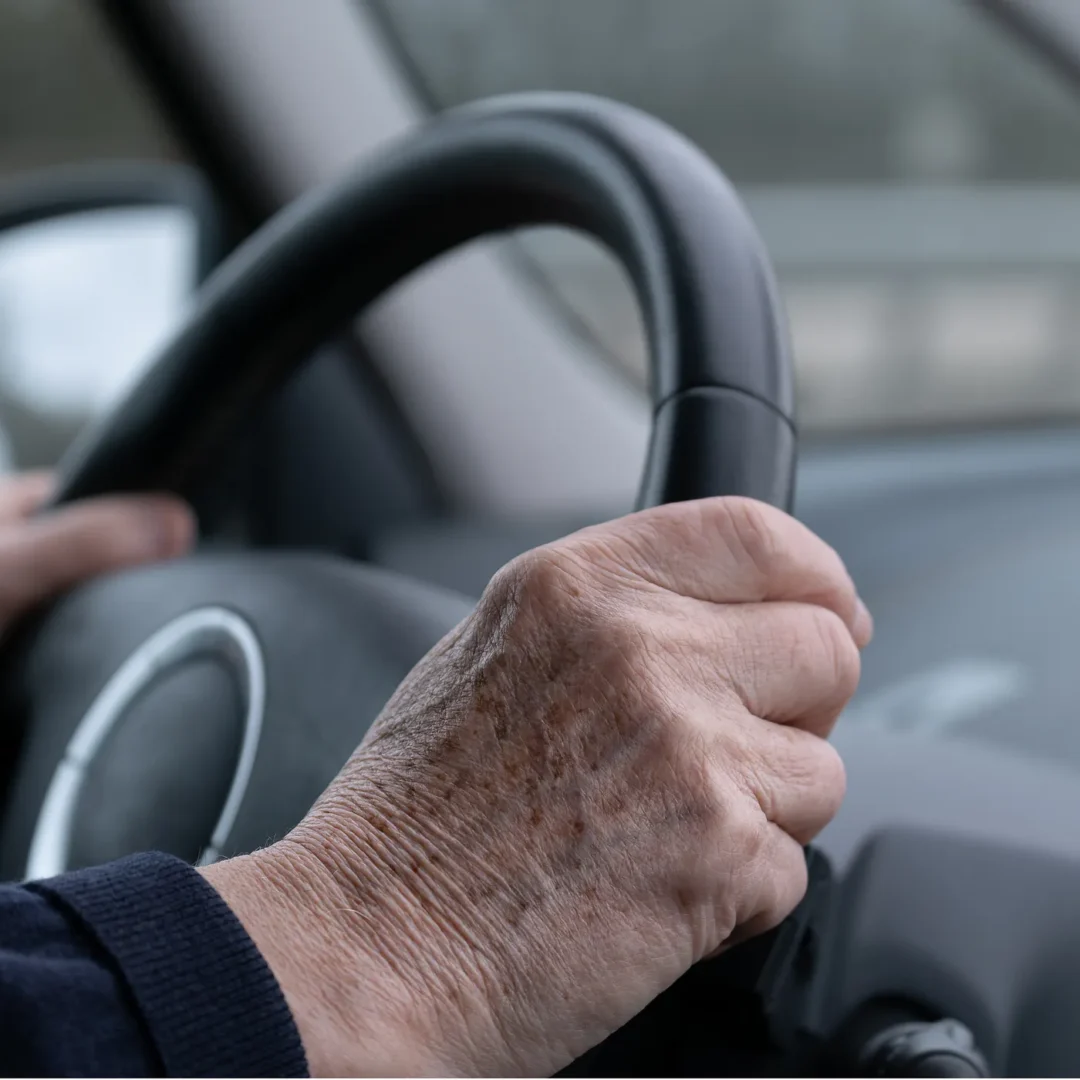Tip 1: Understand legal and insurance considerations
One of the most effective ways to approach the driving issue is to familiarize yourself with the legal and insurance implications in your area. This involves researching state and local laws to understand the potential consequences of allowing someone with dementia to continue driving.
Sue’s Experience:
I learned different states have different laws regarding driving with dementia. In some states, like California and Pennsylvania, doctors are required to report a dementia diagnosis within 10 days. Our neurologist explained to me if someone with dementia is involved in an accident, even if it’s not their fault, they could face serious legal consequences. My husband was very responsible and I felt confident that if the doctor explained this to him, he would recognize the potential consequences and choose not to drive. I asked our doctor to explain these risks to my husband. After hearing this from a medical professional, my husband willingly handed over his keys and never asked to drive again. On my side, I was positive in my support, intentional about proactively getting him out, taking him to places he wanted to go, making sure he got to any place that was part of his routine, and proactively asked him if there was any place he wanted to go.
Nancy’s Experience:
I wish I had known about these legal considerations earlier in our journey. It might have made the transition away from driving much smoother for us.
Tip 2: Implement tracking measures
For those in the early stages of dementia who are still able to drive safely, tracking can provide peace of mind for caregivers while allowing the care receiver to maintain some independence.
Nancy’s Experience:
When my husband was first diagnosed, I was more worried about him getting lost than anything else. I started using a tracking device to monitor his location. There are many options available now including options that come with our vehicles, simple GPS trackers, and more sophisticated apps that monitor driving habits. This allowed me to ensure he was safe without immediately taking away his keys.
Sue’s Experience:
One of our friends took a different approach. Her husband enjoyed weekly golf outings with his buddies and she was concerned about his driving. Instead of using technology, she would discreetly follow him in her own car to observe his driving habits. She even recorded some of his driving to use as evidence when it was time to have the difficult conversation about stopping.
Tip 3: Gradually transition: riding along and taking over
As their diagnosis progresses, it’s helpful to start riding along with them and gradually taking over driving responsibilities.
Nancy’s Experience:
I began volunteering to drive more often, using excuses like needing to get gas in my car or wanting to drive my husband’s car for a change. Surprisingly, he was often happy to let me take the wheel. I think this was partly because he had already limited himself to familiar routes close to home. By offering to drive, I opened up the possibility of going to places he wasn’t confident navigating to on his own.
My mother-in-law used a similar strategy with my father-in-law. She simply started saying, “I’ll drive” more often. Eventually, she became the primary driver without much argument from him. I suspect he was also becoming nervous about driving himself.
My mother’s approach with my father, who had Parkinson’s for 25 years, had a particularly surprising ending. She became uncomfortable with his driving when he kept backing into the mailbox while leaving the driveway. She started volunteering to drive more often, sometimes using his car, sometimes hers. After about a year of this, when it was time to buy a car for my youngest son, she saw an opportunity. She suggested to my father, “You know, since you’re not driving anymore, would you be okay with us selling your car to Nancy for Adam?” To her surprise, my father responded, “I’m not driving anymore?” He hadn’t even realized that he hadn’t driven in a year! This gradual transition had been so smooth that he didn’t even notice the change. It just goes to show that sometimes, the most effective strategies are the ones that happen so naturally that our loved ones hardly notice them.
Tip 4: Remove Them as Drivers Completely
Sometimes, for safety reasons, we need to take more decisive action to prevent our loved ones from driving.
Nancy’s Difficult Decision:
One weekend, my husband insisted on driving. At two different intersections, he made dangerous left turns on red lights. It was terrifying for both of us. After this incident, I knew I had to act. I told him he couldn’t drive anymore, which made him very angry. When he wasn’t watching I hid all the car keys, including the spares. When he couldn’t find them, I played along as if they were simply lost. I waited for the car battery to die, which took about two weeks. (After the fact I learned from a support group that instead of waiting for the battery to die naturally, many people disconnect the battery cable or disconnect the starter. This is a quicker way to render the car inoperable if you need to act fast. Duh!)
When the battery in our car died, I “found” the keys and told him the car needed to be towed for repairs. Eventually, I told him the car was beyond repair and we needed to sell it. For the next two months, he would get angry with me for refusing to take him to buy a new car. I was very intentional about empathizing with him and got very creative redirecting him. It was a difficult phase, but it did pass.
Sue’s Insight:
In situations like this, we’re telling our loved ones the truth they need to hear. Yes, it might feel like lying. We’re actually helping to — most importantly — keep them safe. Through our telling them the truth they need to hear, we also reduce their anxiety.
The journey of taking away the car keys from our loved one is a phase. It will be unique for each of us. This is an excellent topic to discuss in support groups because there are such a wide range of solutions.
It’s reasonable for this to be difficult for us as well as them.
We didn’t go to school to learn this — it’s a highly emotionally charged phase of their — and our — journey. Reach out for guidance. Support is all around us.
While it may feel challenging while you’re in the midst of it, this will pass. As Nancy experienced, “This will end. It doesn’t feel like it when it’s happening. You think, ‘Oh my goodness, I’m going to be dealing with this forever.’ You’ll get through it and get beyond it. It’s going to be okay.”
Ultimately, our goal is to ensure the safety of our loved ones, of us, and others on the road. By understanding legal considerations, using tracking when appropriate, gradually taking over driving responsibilities, knowing when it’s time for them to stop driving completely, or in one step taking them over, we can navigate this challenging aspect of caregiving from the place of love — with compassion, and effectiveness.
If you have tips you think others would benefit from, please share them on our Facebook page or Instagram page.
For more on this topic click HERE to listen to our podcast episode.
We’re all on this journey together.
Additional Resources Mentioned
These resources contain affiliate links so we may receive a small commission for purchases made at no additional cost to you.
- State laws on dementia
- We found this state by state summary online but can’t vouch for the source.
- https://www.dementiacarecentral.com/caregiverinfo/driving-problems/#state-laws
- Check you state law specifically by searching like this “state name law driving with dementia”
- Tracker for their car
- Tracking device for their car with speed detection etc … here
- Tracking device for their person






Join the community